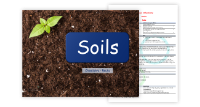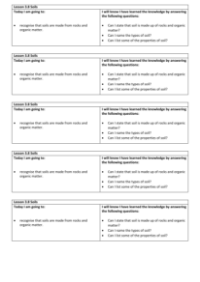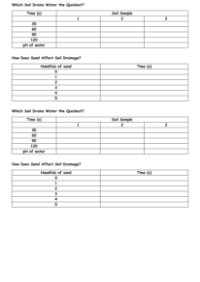Soils - Presentation

Science Resource Description
In this engaging presentation, students are introduced to the fascinating world of soil, beginning with the fundamental question: Can soil be described as a mixture of rocks and organic matter? The lesson aims to provide students with a clear understanding of the composition and types of soil, as well as its various properties. The narrative centers around a character named Oscar who learns from a school gardener that soil is far from being just dirt. The gardener explains that soil is 50% air and water, with the remaining portion consisting of minerals and organic material such as worms and decomposed leaves. Oscar discovers that soil hosts a remarkable diversity of bacteria, and that worms play a crucial role in processing soil for its mineral content, which is also vital for plant growth. The gardener shares knowledge about different soil types including sandy, silty, clay, peaty, and saline, each with distinct characteristics, such as sandy soil's superior drainage capability, which affects agricultural decisions.
The presentation delves deeper into the structure of soil by examining its layers, known as horizons. Students learn that soil is stratified into the humus, topsoil, subsoil, and regolith layers, each with unique features. The humus or O Horizon is rich in living and decomposed organic matter, while the A Horizon or topsoil contains a mix of minerals and decomposed matter where many plant roots thrive. The B Horizon or subsoil is characterized by clay and mineral deposits with less organic material and a lighter color compared to the layers above. Lastly, the C Horizon or regolith is composed of slightly unbroken rock with minimal organic content and is typically devoid of plant roots. The lesson also includes practical investigations into soil properties such as drainage, where students observe how water permeability varies among different soil types, discovering that sandy soil allows water to pass through more quickly due to the ample space between its grains. By the end of the presentation, students are expected to be able to identify components of soil, name various soil types, and describe several of its properties, thereby gaining a comprehensive understanding of this essential natural resource.






